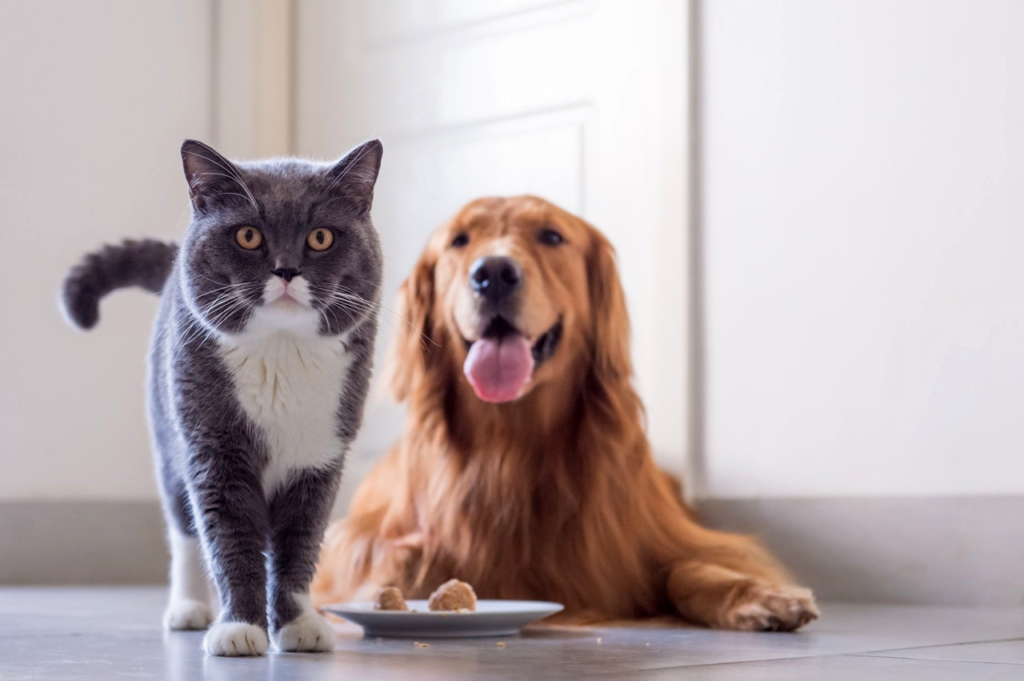
Understanding and Preventing Pet Obesity
Pet obesity is becoming increasingly prevalent worldwide, mirroring the trend seen in human populations. Just as in humans, obesity in pets poses significant health risks and can greatly diminish their quality of life. In this article, we will delve into the causes, risks, and prevention strategies for pet obesity to help pet owners better understand and address this critical issue.
Read More: Understanding Pet Obesity: Identifying Risks and Managing Weight
Introduction to Pet Obesity

Pet obesity refers to an excessive accumulation of body fat in pets, typically resulting from overfeeding and inadequate physical activity. It is a widespread concern affecting millions of pets globally and requires proactive management from pet owners and veterinarians alike.
Causes of Pet Obesity
One of the primary causes of pet obesity is overfeeding combined with a lack of exercise. Pets consuming more calories than they expend will inevitably gain weight. Additionally, poor diet choices, such as feeding table scraps and high-calorie treats, contribute to weight gain in pets. Certain medical conditions, such as hypothyroidism or hormonal imbalances, can also predispose pets to obesity.
Health Risks Associated with Pet Obesity
Obesity in pets can lead to various health problems, including joint issues, diabetes, and heart disease. Excess weight places strain on the joints, increasing the risk of arthritis and reducing mobility. Pets with obesity are also more susceptible to developing diabetes mellitus and cardiovascular diseases, significantly impacting their lifespan and overall well-being.
Signs of Pet Obesity
Recognizing the signs of obesity in pets is crucial for early intervention. Common indicators include noticeable weight gain, reduced mobility, and changes in behavior, such as lethargy or reluctance to engage in physical activity. Regular monitoring of body condition and weight is essential for identifying and addressing obesity in pets.
How to Prevent Pet Obesity
Preventing pet obesity requires a multifaceted approach. Providing a balanced diet, regular exercise, and portion control are key components of effective weight management. Pet owners should consult with their veterinarians to determine the appropriate caloric intake for their pets based on factors such as age, breed, and activity level.
Tips for Weight Management
Effective weight management involves monitoring food intake, incorporating regular physical activity, and seeking guidance from veterinarians. Pet owners should carefully measure and portion their pet’s food to prevent overfeeding and encourage regular exercise through activities such as walking, playing, or interactive toys.
Importance of Regular Veterinary Check-ups
Regular veterinary check-ups are essential for monitoring pet health and identifying early signs of obesity. Veterinarians can provide personalized recommendations for nutrition, exercise, and weight management tailored to each pet’s unique needs. Routine examinations also allow for the early detection and treatment of underlying medical conditions contributing to obesity.
Creating a Healthy Environment for Pets

Creating a conducive environment for pets involves providing mental stimulation, limiting treats, and establishing a consistent routine. Interactive toys, puzzle feeders, and scheduled playtimes can help keep pets mentally and physically engaged while reducing the likelihood of overeating.
Understanding Pet Food Labels
Reading pet food labels is essential for making informed decisions about pet nutrition. Pet owners should look for high-quality ingredients, avoid fillers and artificial additives, and select pet foods that meet the nutritional standards established by regulatory bodies. Understanding how to interpret pet food labels can help pet owners choose the most appropriate diet for their pets.
The Role of Owners in Preventing Pet Obesity
Pet owners play a crucial role in preventing obesity by educating themselves about proper nutrition and exercise for their pets. Setting realistic goals, adhering to feeding guidelines, and seeking support from veterinarians and pet care professionals are essential steps in combating pet obesity. By actively engaging in their pet’s health and well-being, owners can help prevent obesity and promote a healthier lifestyle for their pets.
Addressing Emotional Aspects of Pet Obesity
In addition to addressing the physical aspects of pet obesity, it is essential to consider the emotional impact on both pets and their owners. Feelings of guilt or frustration may arise when dealing with pet obesity, but seeking support from friends, family, or online communities can provide encouragement and motivation during the weight loss journey. By acknowledging and addressing these emotional aspects, pet owners can better support their pets’ overall health and well-being.
The Link Between Owner and Pet Health
The health of pets and their owners is closely intertwined, with both parties benefiting from a healthy lifestyle. Engaging in regular exercise, maintaining a balanced diet, and fostering a strong human-animal bond can improve the overall well-being of both pets and their owners. By prioritizing their own health and well-being, pet owners can set a positive example for their pets and create a supportive environment conducive to a healthy lifestyle.
Case Studies: Successful Weight Management Stories
Sharing success stories of pets who have successfully overcome obesity can provide inspiration and motivation for pet owners facing similar challenges. Real-life examples of weight loss journeys highlight the effectiveness of proactive management strategies and the importance of dedication to pet health. By celebrating these success stories, pet owners can gain valuable insights and encouragement to help their pets achieve and maintain a healthy weight.
Challenges in Preventing Pet Obesity

Despite efforts to prevent pet obesity, various challenges persist, including cultural perceptions of pet care, economic constraints, and lack of awareness. Addressing these challenges requires collaboration between pet owners, veterinarians, policymakers, and pet industry stakeholders. By raising awareness, advocating for policy changes, and promoting education about proper pet nutrition and exercise, we can work together to combat pet obesity and improve the health and well-being of pets worldwide.
Read More: Pet Insurance for Exotic Pets: What You Need to Know
FAQs
- How do I know if my pet is overweight? Monitor your pet’s weight regularly and look for signs such as a protruding belly, difficulty breathing, or reluctance to move.
- Can certain breeds of pets be more prone to obesity? Yes, certain breeds, such as Labrador Retrievers and Beagles, are genetically predisposed to obesity and require extra vigilance in managing their weight.
- What should I do if my pet is already overweight? Consult with your veterinarian to develop a tailored weight loss plan, which may include dietary changes, exercise regimens, and regular check-ups.
- Are there any weight loss supplements or medications for pets? Weight loss supplements and medications should only be used under the guidance of a veterinarian and as part of a comprehensive weight loss program.
- How can I prevent my pet from begging for food? Avoid feeding table scraps and high-calorie treats, establish a feeding schedule, and provide mental stimulation and physical activity to distract your pet from begging behaviors.
The Final Words
Understanding and preventing pet obesity is essential for ensuring the health and longevity of our beloved pets. By implementing proactive measures such as proper nutrition, regular exercise, and veterinary care, pet owners can help their pets maintain a healthy weight and live fulfilling lives. Through education, awareness, and collaboration, we can make significant strides in addressing pet obesity and promoting the overall health and well-being of pets everywhere.







